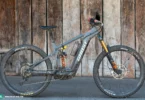What are the hottest eMTB bike trends of 2022? What are the biggest challenges facing the industry? Where is there still untapped potential? And what impact will the battery arms race and Coronavirus have on the 2022 season? We’ve summarised the most exciting findings from the big 2022 eMTB group test for you here!
1. Battle of the model years – Why “old” eMTBs have suddenly become better on the trail
For 2022, many manufacturers have increased their standard battery capacity to significantly more than 700 Wh. That’s because, “How far can I get on one battery charge?” has long been the most frequently asked question for potential customers. Unsurprisingly, bigger simply sells better. The logical move for most bike brands is to offer bigger batteries for everyone. Unfortunately, with the current crop of huge batteries, most trail eMTBs have overshot the mark. More battery capacity usually makes the handling of bikes worse, not better. The result: for 2022, trail handling has partly suffered and bikes have become unnecessarily heavier, impacting riding fun and agility.
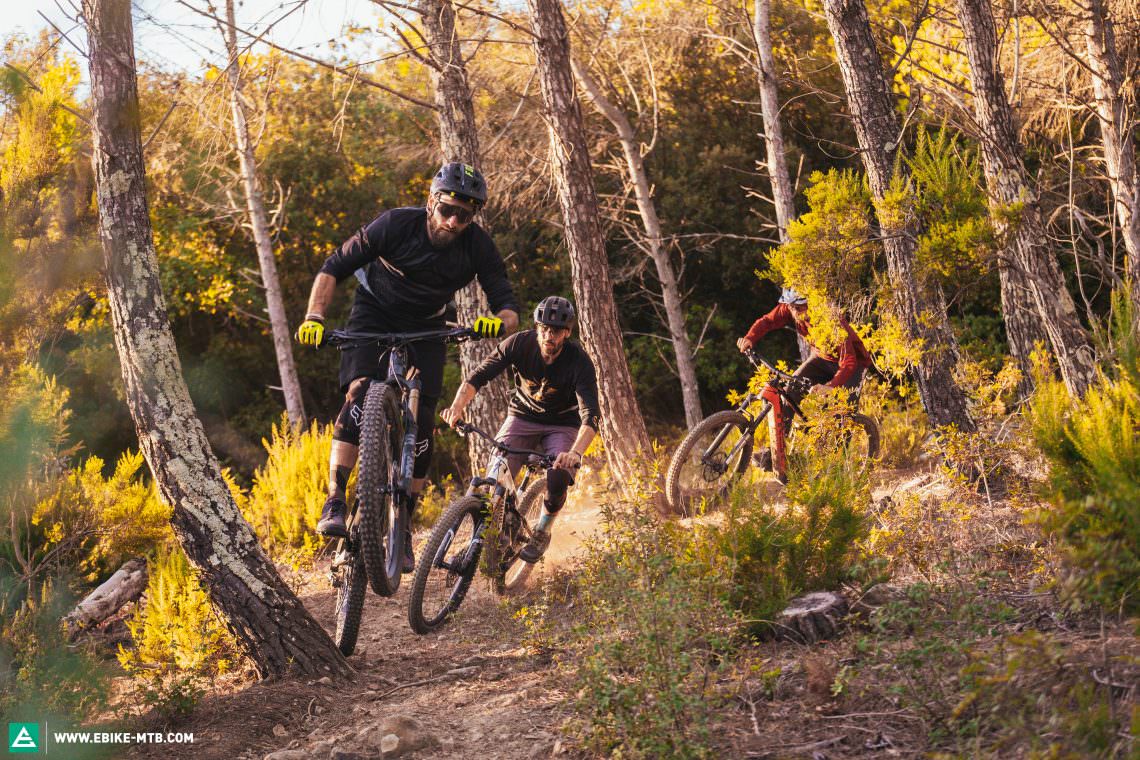
In addition, integrating these ever larger and longer batteries into bikes without compromising stiffness and durability, becomes more of a challenge. This is also one of the reasons why bike manufacturers like FOCUS, Rocky Mountain, Norco and Specialized rely on an almost entirely closed down tube design. While this allows them to keep the battery’s centre of gravity as low and central as possible, the battery has to be removed from the base of the down tube, meaning you have to lay down or flip your bike to get it out.
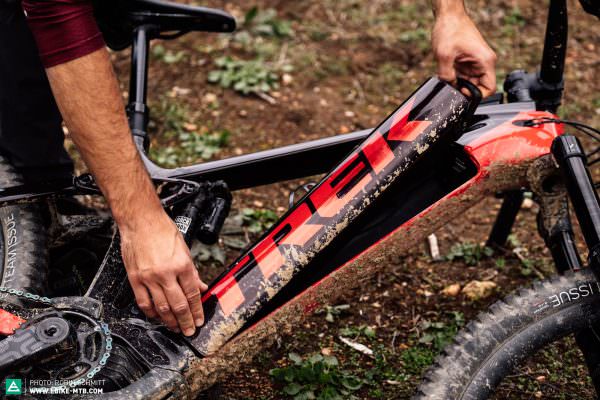

Trek take a different approach and fit a 750 Wh Bosch battery using their tried and tested RIB system (Removable Integrated Battery), allowing the battery to be conveniently removed from the side of the down tube. Great in theory, but our testing found that the battery rattles against the inside of the frame through braking bumps, edges and landings. The resulting vibrations upset the Rail. Sadly, the capable 2021 Trek Rail all-rounder with its 625 Wh battery has become a flighty beast with its 750 Wh battery in 2022, rendering it unsuitable for high-speed use.
Overall, we see no advantage in batteries with 700+ Wh for sporty trail use. On the contrary, in terms of handling, the larger batteries primarily create disadvantages on the trail. The example of the YT DECOY with its 540 Wh battery makes it clear that the industry has now overshot the mark when it comes to battery capacity. The YT sticks with the same platform as its launch in 2019, with the bike receiving just a few updates including a new motor for 2022. The supposedly old-fashioned DECOY has become much better for the new season and, with its comparatively high agility and plenty of riding fun, outperforms some models that have been freshly conceived for 2022. Compared to bikes with ever larger batteries, it rides more like a Light eMTB than an all-rounder.
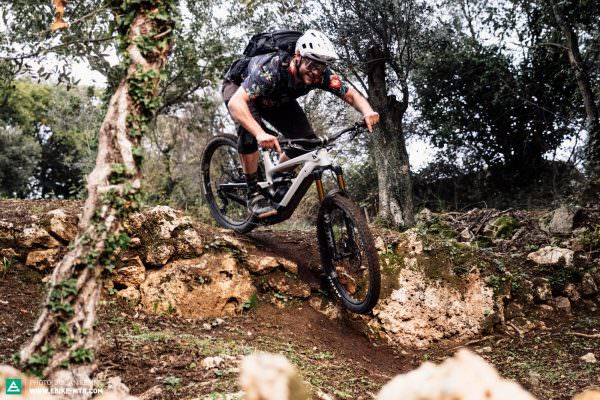

If you take a modern approach to Light eMTBs i.e. with a small internal battery and separate range extender, as Orbea have done with the Rise, the picture changes. The good handling of the Orbea Rise is helped by its excellent weight distribution and the fact that it has a more optimal centre of gravity than bikes with a larger battery. As a result, it is much easier to manoeuvre than most of the other bikes in the test field and, depending on the support level and rider weight, the 60 Nm motor in combination with the small 360 Wh battery are completely sufficient on all but the steepest ascents in the wrong gear. With the range extender, the bike has a 612 Wh capacity, leaving it with almost as much in the tank as the standard Shimano system. With a modular battery concept, you have the choice of how much capacity you need on a particular day and can be prepared for everything without having to accept any disadvantages in handling. That said, even without a modular battery concept, riding fun on the trail is possible – with the right balance. And that balance is 625 Wh. Last year we identified 625 to 630 Wh as the optimum choice for eMTBs for trail use. This year, this assessment has been confirmed once again thanks to the convincing performance of the Yeti 160E.
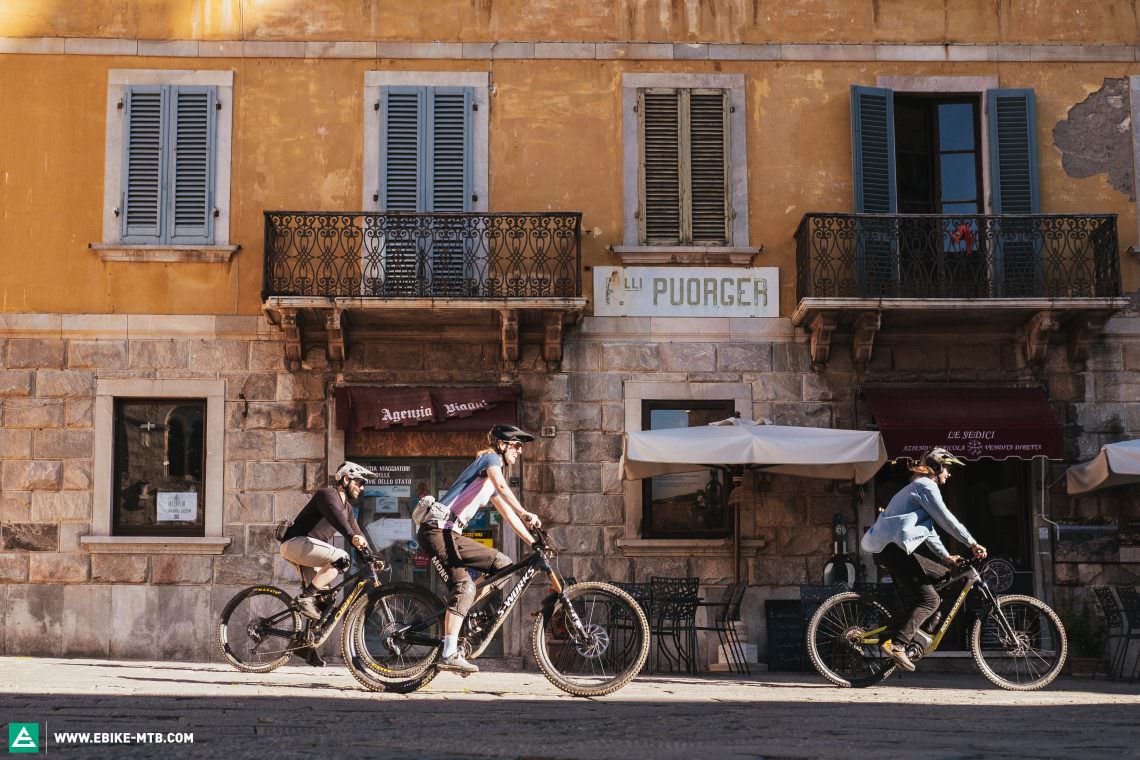
2. EMTB categories are changing
EMTBs are evolving rapidly and so are eMTB categories. In 2019, we defined the categories of Light eMTBs and all-round eMTBs, which have since been adopted industry-wide. And now, three years later, the boundaries between these categories have become blurred. Due to the ongoing battery arms race, what used to be normal is now considered “light”. For example, the YT DECOY from our big 2022 eMTB group test passed as an all-rounder three years ago. Today, sticking with its 540 Wh battery, it falls between the categories of all-round and Light eMTB. Other bikes have become unnecessarily heavier with the 2022 model change, and their handling on the trail has become significantly worse. Are they still all-rounders? We’re sure that manufacturers will launch new motor systems in the course of the 2022 season that will further change the market and, in particular, stir up the Light eMTB segment. It’s still unclear where this will lead in the future. The fact is, that neither torque nor battery capacity can be the sole criteria in the future.
3. Your bike is only as good as your setup – Help is at hand!
In an ideal world, your suspension ensures that the tires track the uneven ground, while the sprung mass of you and your bike glides smoothly over obstacles. As a rider, this allows you to concentrate on what’s in front of you. The suspension system has to translate the rider’s input, filter out bumps and provide control. The good news is that there are now many bikes with good suspension that are able to do just that. The not-so-good news: suspension is only as good as you set it up to be! In other words, the best suspension is useless if it’s not set up correctly for you. To do this well, you either need experience and technical understanding or the right help. Thankfully, that help is available, though unfortunately it is used far too seldom!

When it comes to suspension forks, FOX and RockShox have been providing great advice for years. With their setup guides and apps, they help you to find a baseline setting for your fork that suits you and your weight, without the need for any prior knowledge or technical know-how. That’s not as easy with the rear suspension. Here you have to rely on the expertise of the bike manufacturer, because complex suspension kinematics make general pressure specifications and settings impossible. YT, Norco and Trek have recognised this issue and help you with a simple step-by-step guide to find your basic setup. You won’t need anything more than a shock pump, an Allen key, knowledge of your current weight and bike model and 10 minutes of your time. So if you’re not yet a suspension guru, you should definitely check out your manufacturer’s recommendations. It couldn’t be easier!
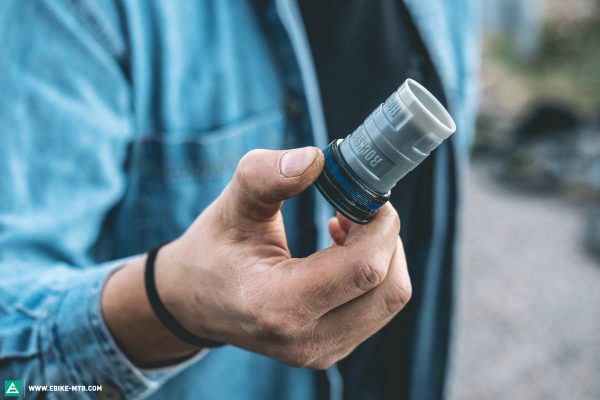
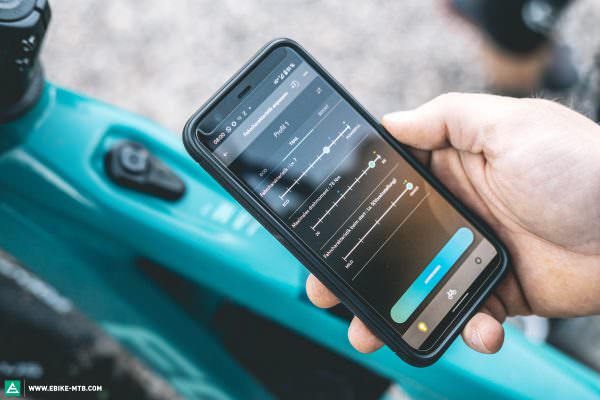
The best suspension is useless if it’s not well tuned. Thanks to setup guides and apps, anyone can adjust their own suspension. But too few do it!
Those who want more in-depth assistance adjusting their suspension will find their partner in the RockShox AirWiz system on the Trek Rail 9.9. The system monitors air pressure in the suspension and sends it to your smartphone, where the app provides recommendations to the rider. The system will also warn you if the pressure is too low or too high. To make suspension setup as easy as possible for non-pros, you enter your weight in the app and are provided a target pressure. If the current air pressure is outside the target range (+/- 2 psi for the fork and +/- 5 psi for the shock), the suspension components will alert you with a red flashing light.
4. Viagra for your eMTB? Many capable bikes, much less capable components
How many eMTB need viagra? Quite a few! Because a lot of eMTBs fall short of their potential on the trail because their spec doesn’t do justice to their capable character. The result: some bikes want to go faster than they can.
Many bikes are limited by their spec, which reduces durability and riding enjoyment.
Downhill tires on eMTBs are also better uphill
A misconception among many bike manufacturers and bikers is that thick-walled, puncture-proof and heavily treaded downhill tires are only for downhill junkies. The name suggests as much, but don’t be fooled by the nomenclature or marketing slogans. In order to lower the weights and prices of their bikes, many manufacturers resort to lightweight tires, which can easily offer a 1 kg weight saving. That’s one reason why you’ll rarely see the robust Schwalbe Eddy Current eMTB tire on standard bikes. Yet almost everyone benefits from increased puncture protection, maximum grip and low air pressure without risking bottoming out the tire on the rim. Semi-slick tires simply don’t make sense on an eMTB – they need grip for climbing and braking.
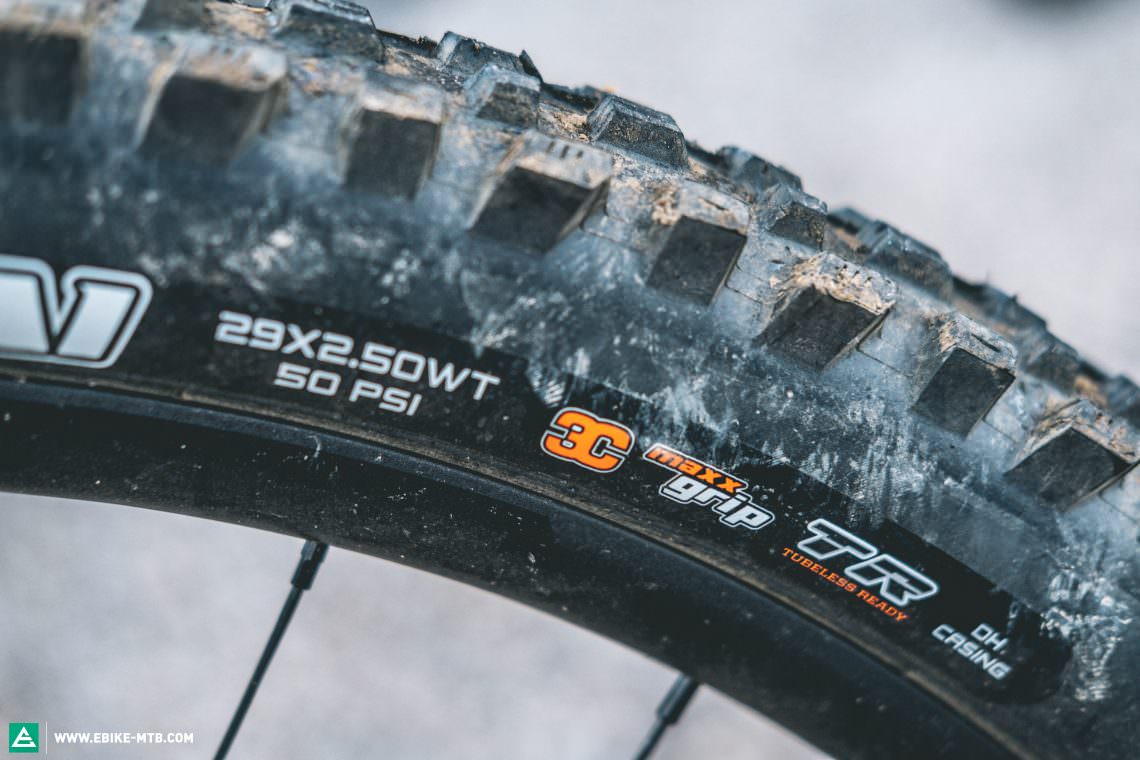
This test has shown, that even uphill (!) aggressively treaded “downhill tires” are the best choice for an eMTB! A bike only becomes a climbing virtuoso thanks to its tires. If you also like to ride trails uphill, you should get tires with an aggressive tread and sturdy casing. For MAXXIS, this would be the Doubledown (DD) or for Schwalbe, the Super Gravity casing. This way you can set the air pressure super low, get maximum grip on the rear wheel and ensure proper braking traction. Even beginners will benefit from the extra grip on the front and rear wheel. Downhill tires only become overkill when you are planning on using them just for light touring duties. To make the right choice when it comes to rubber compound, dimensions and tread, you should take a closer look at our tire group test.
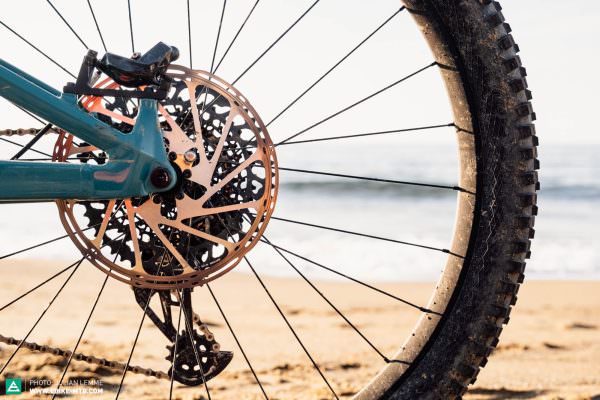
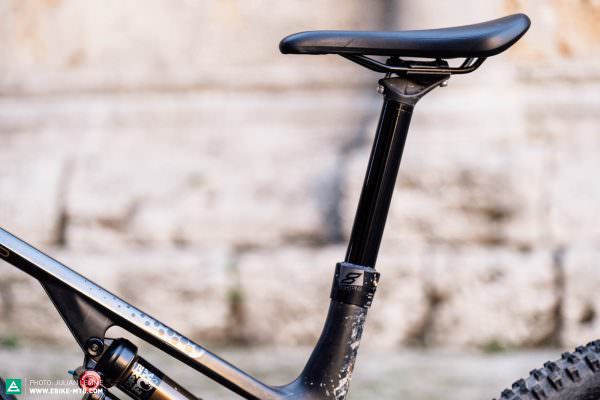
For brakes and dropper posts: more = better
The braking power and dropper post travel both have a considerable influence on the fun and the feeling of safety on the trail. Most manufacturers have recognised this and are installing dropper posts with more stroke than a year ago and using larger brake discs. The motto is: if more is possible, more is better. The bigger the disc rotor, the better the control, modulation and consistency on long descents. Even 70 kg flyweights who don’t necessarily need it, can benefit from 220 mm brake discs like those on the FOCUS JAM2 7.0. To allow maximum freedom of movement, the dropper post travel for a size L bike should be at least 170 mm. For those with short legs, there are droppers whose travel can be adjusted without tools, allowing you to get the most travel possible. Unfortunately, these are still not in widespread use.

No one needs suspension fork lockout on an eMTB!
Lockout on your suspension fork? No one needs it! In the past, on analogue MTBs, this was common practice, but on eMTBs, the efficiency gain is irrelevant. However, the real issue is that FOX’s FIT4 damper, which has lockout, performs worse than their GRIP2 cartridge without lockout, which offers increased adjustability, traction and control. As a result, the FIT4-equipped FOX 36 limits trail performance e.g. on the ROTWILD R.E375 PRO.
5. Are carbon rims on eMTBs worse than aluminium rims?
Not all carbon is created equal, but nevertheless our answer is quite clear: yes! Aluminium wheels are the better choice on an eMTB! The weight advantage of carbon over aluminium rims on an eMTB is minimal and the issue of stiffness insignificant, which is why we cannot see any clear advantage to the expensive material. For sporty trail use, carbon rims are completely out of place without robust and correspondingly heavy tires. Damage means total failure, while aluminium rims can often get away with a dent and still get you home or through your bike holiday.
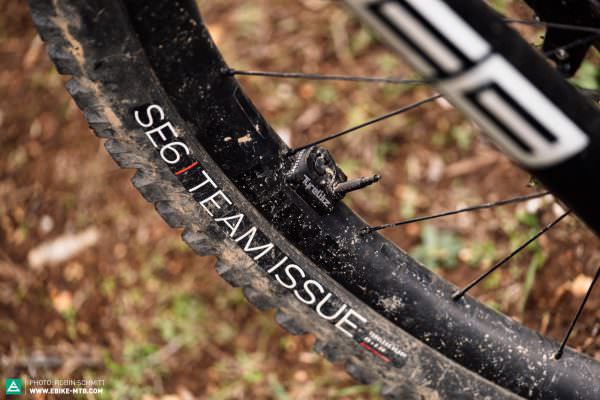
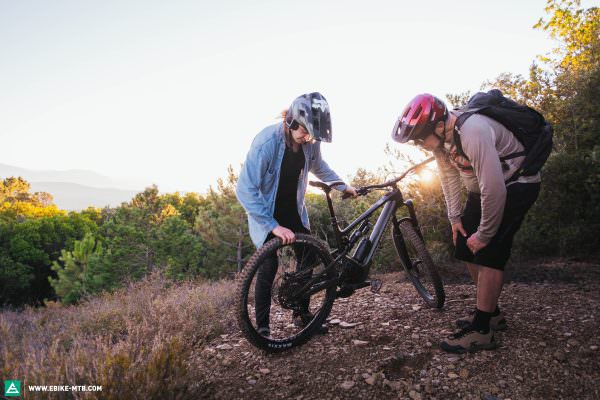
6. Availability, delivery times, spare parts – A continuing challenge for the industry in 2022
At the end of 2020, the Corona crisis and the bike boom had already led to delays and higher prices. Unfortunately, there is no significant improvement in sight for 2022. Manufacturers were able to overcome some hurdles in 2021 as well as develop new strategies to meet them. But new challenges are constantly being added. As a result, some bikes aren’t specced as they should be, yet bikes are getting more expensive as the higher costs of shipping limited quantities from Asia are passed on to the customer. Availability, spare parts and delayed delivery times will continue to affect the bike industry in 2022. In these times, the maintenance of your (new) bike is not to be disregarded. With poor spare parts availability, issues cost you not only money, but time and nerves. One example from the group test is the wheelset on the Rocky Mountain. It had to be trued several times. The quality of a wheel depends not just on the individual components but also on the quality of the wheel’s construction. In our sister magazine ENDURO, you can find out why innovations and ultimate performance should not always be the maxim and why you should place more value on quality, durability and spare parts availability.
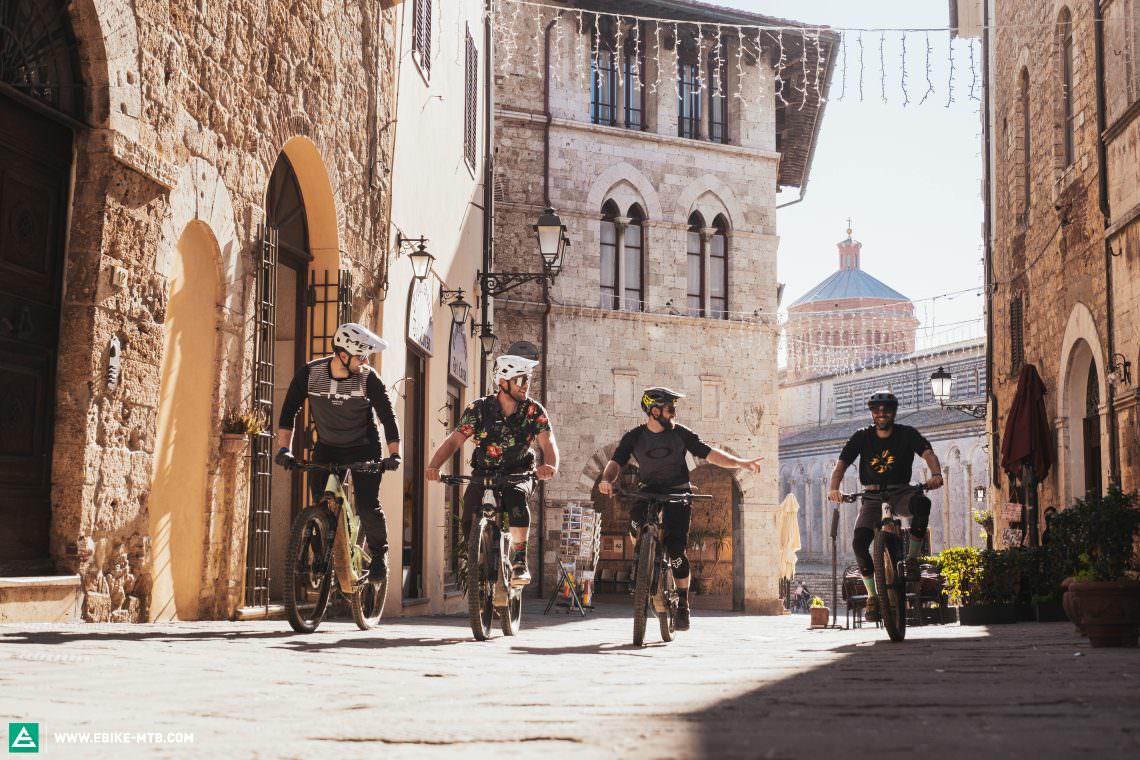
7. Don’t trust any geometry value that you haven’t falsified yourself
Geometry defines how a bike feels on the trail and how you interact with your bike. Comfort, stability and agile handling are significantly influenced by the geometry. It also determines how you sit on the bike, how your body weight is distributed between the wheels and how the bike handles different gradients on the trail. That’s why we tend to compare geometry values with each other. But beware: geometry table values should be taken with a pinch of salt. Firstly, they are not the only thing that influences a bike’s handling. Secondly, individual values can’t always be compared between different bikes. In particular, the seat tube angle should be treated with extreme caution. Reality and what is on paper can be far apart. One reason is that there is no standardised measurement, meaning that values can’t always be compared one to one. Another is that it is always the interaction of all individual properties that counts, not just a single number in a table. The seat tube angle is of course extremely important, determining your riding position and the bike’s climbing characteristics, as well as influencing your suspension setup. But that’s exactly why we don’t compare the seat tube angle in our tests on the basis of numbers, but on the basis of reality on the trail. And that’s exactly why we tell you how your weight is distributed on each bike and how you are positioned on the bike on the uphills.
Did you enjoy this article? If so, we would be stoked if you decide to support us with a monthly contribution. By becoming a supporter of E-MOUNTAINBIKE, you will help secure a sustainable future for high-quality cycling journalism. Click here to learn more.
Words: Jonas Müssig Photos: Various









